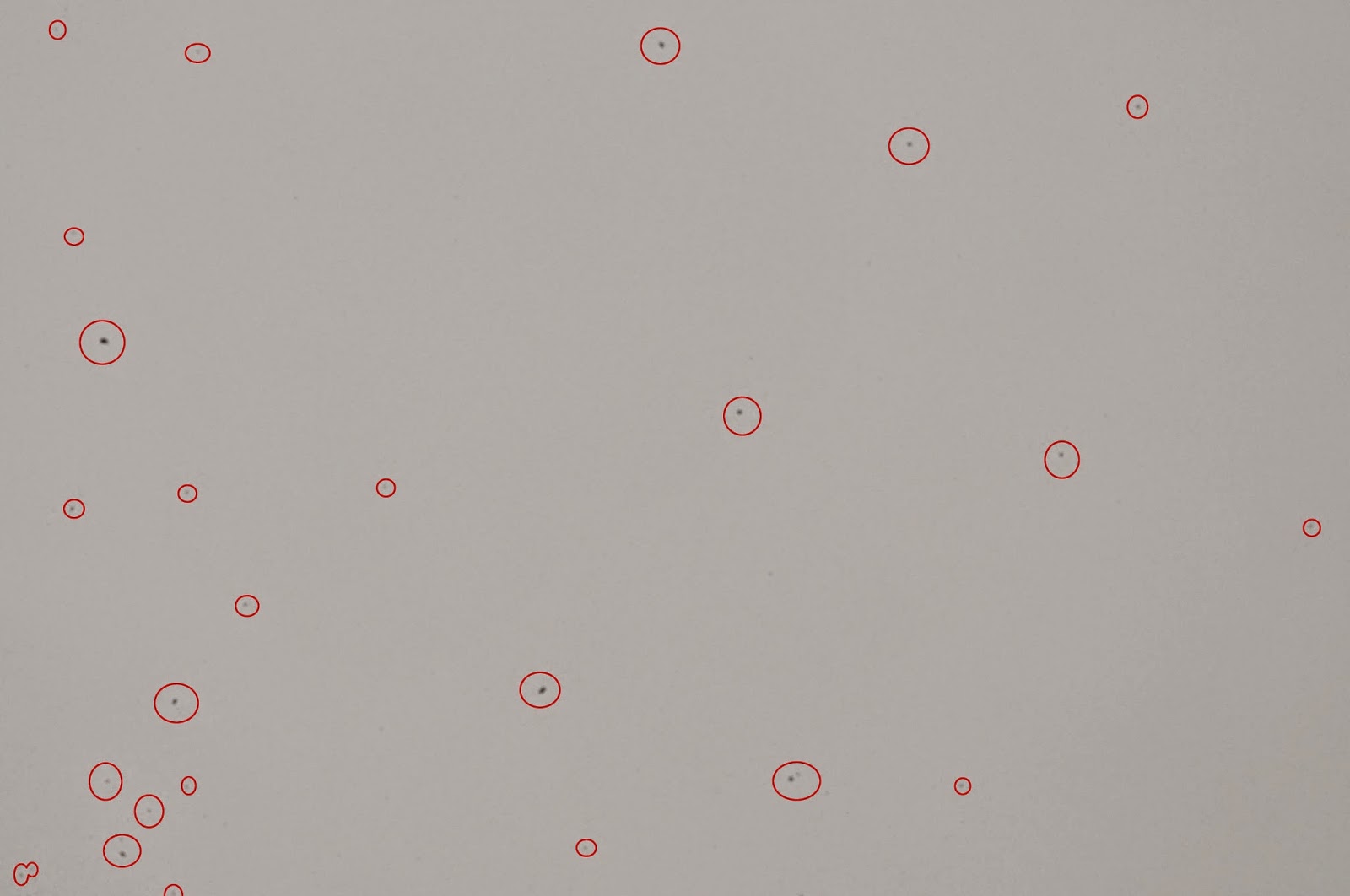Like everywhere else, dust also settles on your camera sensor. No matter how careful, or quickly you change your lenses, eventually, the sensor will need to be freed from the volatile "debris", as spots will become apparent on your images.
Do the test... Use a tripod, and while using the camera`s exposure meter, target a white wall & set your ISO high enough, and exposure time long enough, to compensate for an F22 depth of field. In my case, it was... 1/6 sec, ISO 3200 & F22.
Because the particles aren't sitting directly on the sensor, but most specifically on top of the filters covering the sensor, the higher the depth of field, the more visible and detailed they will be on your image. Look at your image at 100% scale, on your monitor. If present, Dust should be easily visible. Another good trick to see the particles on screen more easily, is to open the image in Photoshop, and use the "Emboss" Filter.
Because the particles aren't sitting directly on the sensor, but most specifically on top of the filters covering the sensor, the higher the depth of field, the more visible and detailed they will be on your image. Look at your image at 100% scale, on your monitor. If present, Dust should be easily visible. Another good trick to see the particles on screen more easily, is to open the image in Photoshop, and use the "Emboss" Filter.
We'll show you how to efficiently and safely remove dust, using a brush and compressed air. You'll need a specialty brush, and a can of compressed air (sold at most large-surface retailers).
At first, you may find this quite nerve-racking, but after a few times, you'll be able to it, while having your morning coffee. There's really nothing to it, and no need to go and have it done at the local camera shop. Plus, carrying a specialty brush, and finding a can of compressed air, is a lot easier when traveling on a shoot, than locating a trustworthy and authorized retailer!
At first, you may find this quite nerve-racking, but after a few times, you'll be able to it, while having your morning coffee. There's really nothing to it, and no need to go and have it done at the local camera shop. Plus, carrying a specialty brush, and finding a can of compressed air, is a lot easier when traveling on a shoot, than locating a trustworthy and authorized retailer!
I'll use details from a Canon camera body, as that's what I have on hand, but the same applies for other makes and models as well.
Let's get started!
1. Make sure your camera battery is fully charged (you don't want the mirror
to flip back down while you're in there with a brush)
to flip back down while you're in there with a brush)
2. In the menu, under the "Clean Sensor" option, select "Manually Clean"
(this will flip the mirror up, and reveal the sensor for easy access)
(this will flip the mirror up, and reveal the sensor for easy access)
3. Use a dedicated "Visible Dust" type brush that easily magnetizes
4. Use a can of compressed air to "Activate/Magnetize" the brush
5. Gently swipe the brush from Right > Left
6. Repeat from Left > Right, using the other side of the brush
7. Use compressed air to remove debris from the brush, and re-activate
8. Repeat steps 5 & 6
9. Install lens
10. Turn camera Off, to complete the process.
VisibleDust > http://www.visibledust.com/
Note* Do NOT use compressed air directly in the camera body!!
Here are a few Tips, to help you prevent having to clean your sensor too often;
1. Try to interchange your lenses in a "clean" environment
2. Avoid changing lenses in windy areas whenever possible
3. Keep the camera facing down (work with gravity, not against it)
4. Never change your lenses in the rain (water spots are harder to clean)
4. Never change your lenses in the rain (water spots are harder to clean)
4. Change the lens quickly
If you experience having to conduct a more rigorous cleaning to remove stubborn spots, other "wet" products are also available. This practice is slightly more technical, and some of you might prefer going to see a specialist.




